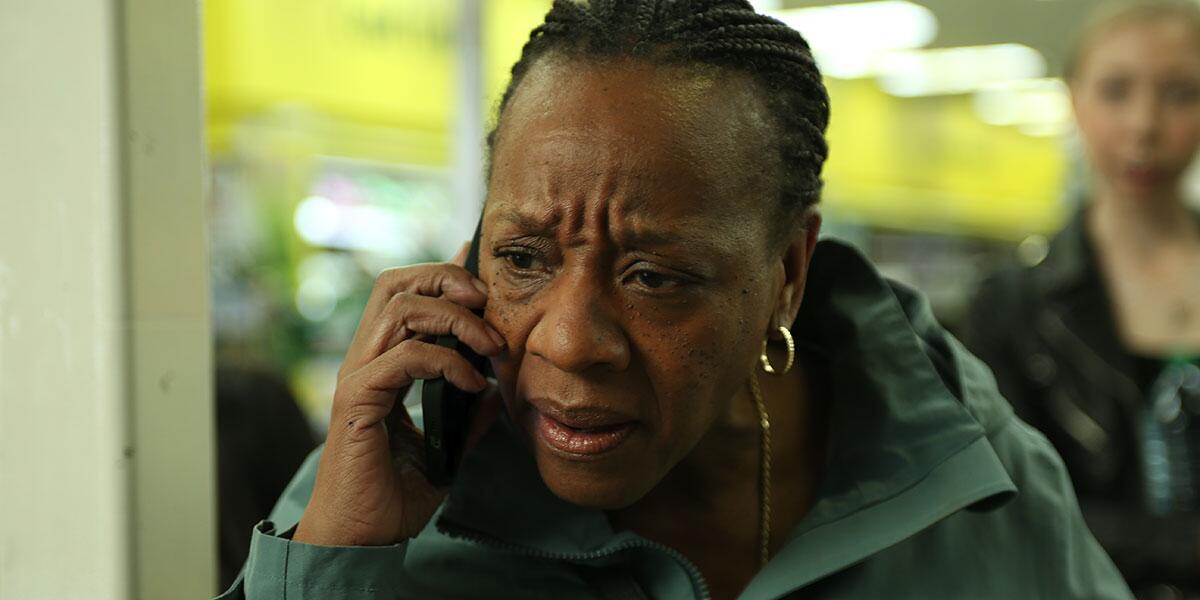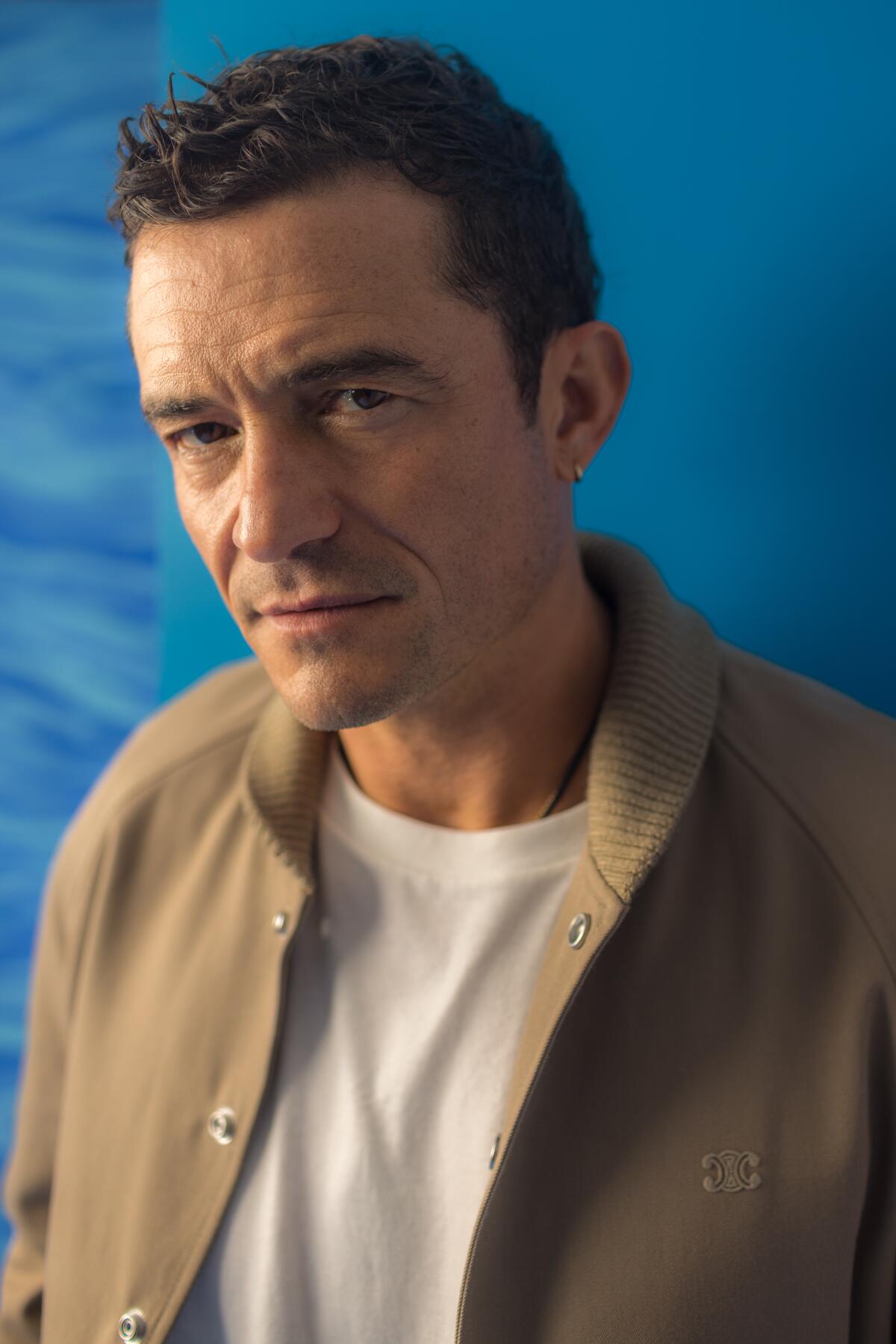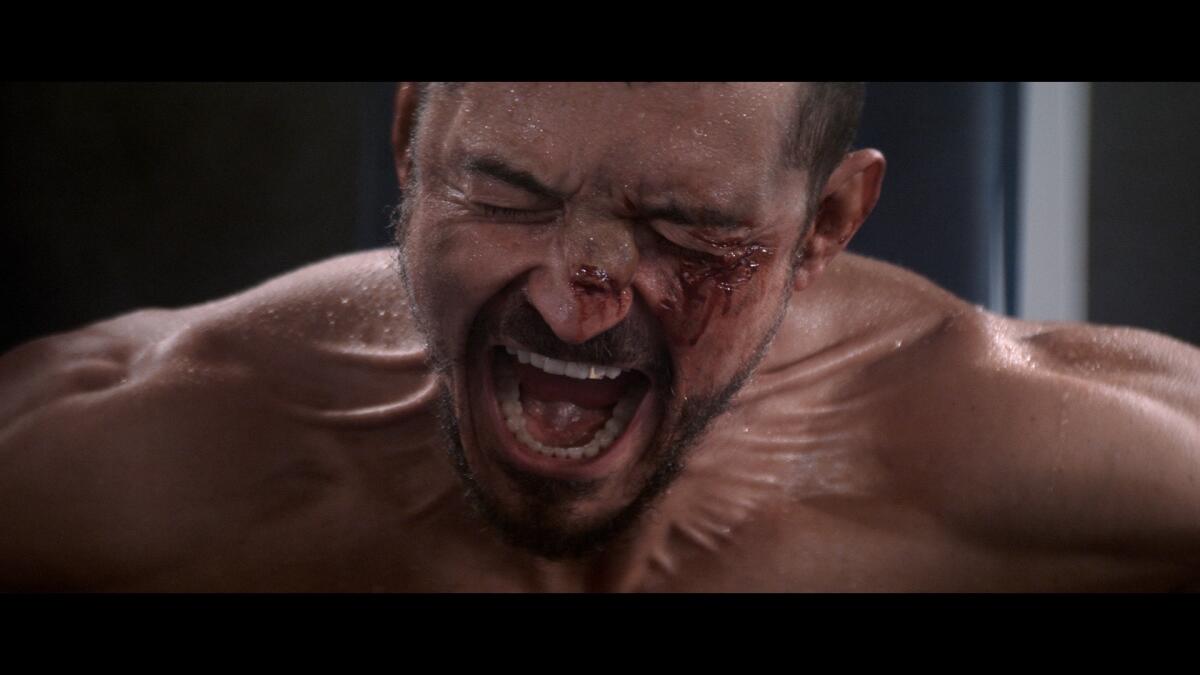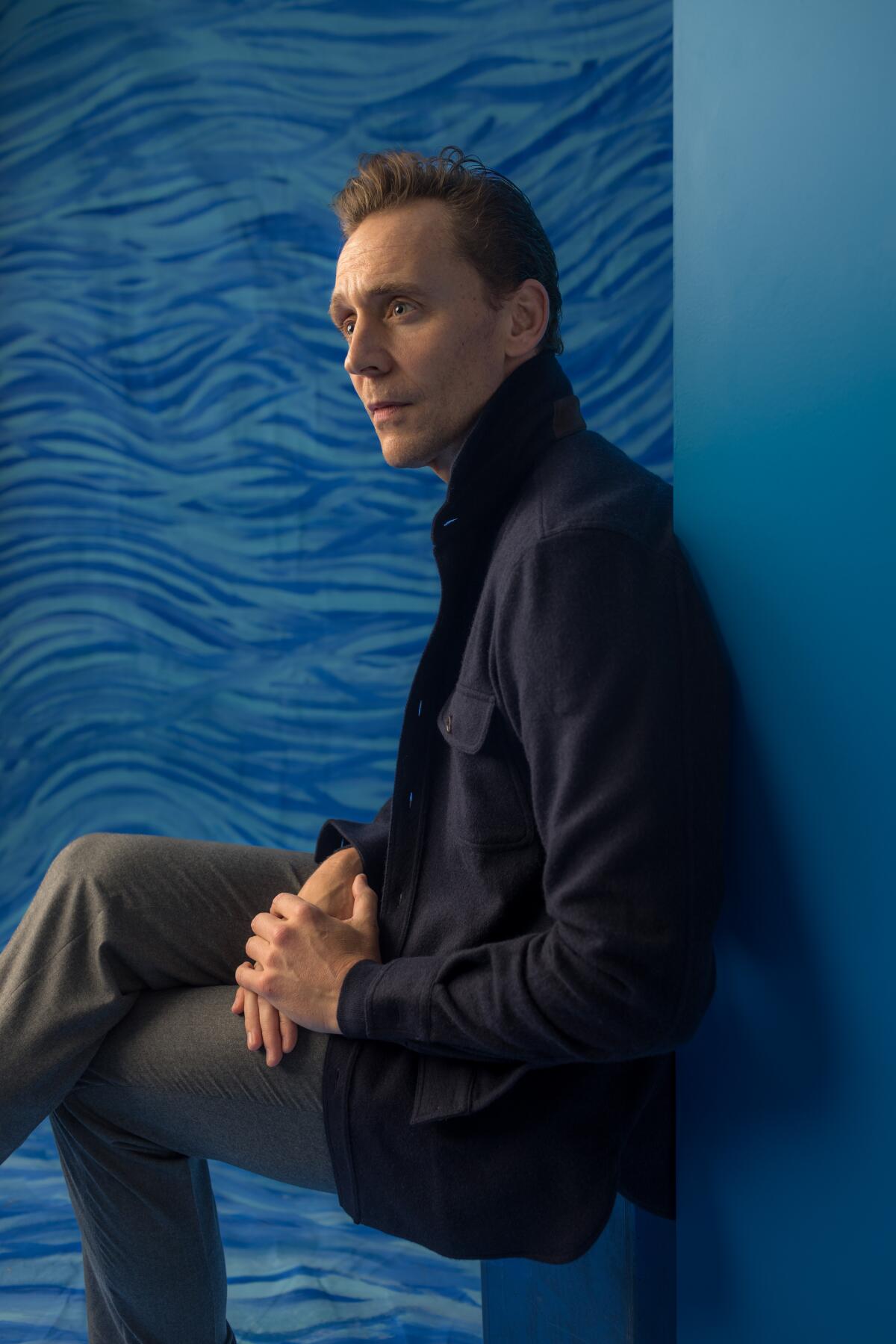Welcome to a special edition of the Envelope newsletter, your comprehensive guide to awards season. We’re coming to you throughout the opening weekend of the 2024 Toronto International Film Festival, where the entertainment experts at The Times will bring you interviews, opinion and analysis from one of the events that traditionally kicks off the Oscar race. Sign up here to get it in your inbox.
Newsletter
From the Oscars to the Emmys.
Get the Envelope newsletter for exclusive awards season coverage, behind-the-scenes stories from the Envelope podcast and columnist Glenn Whipp’s must-read analysis.
You may occasionally receive promotional content from the Los Angeles Times.
The day’s buzziest premieres
Ron Howard, director of “Eden.”
(TIFF)
Conventional wisdom has set in over the last few years that Venice and Telluride have the juice when it comes to launching new fall films. TIFF’s organizers seem to be betting big that the two prominent world premieres being given some of the festival’s most high-profile venues and time slots on Saturday can alter that vibe.
First up is Ron Howard’s “Eden,” starring Jude Law and a formidable power trio of leading ladies in Sydney Sweeney, Vanessa Kirby and Ana de Armas in the story of a group of people in the 1930s who attempt to create their own society in the Galapagos Islands. The film finds the old Hollywood hand of Howard making the film independently and coming into the festival looking for distribution, which adds a little more dramatic portent to the premiere.

Amy Adams in Marielle Heller’s “Nightbitch.”
(TIFF)
Later on comes the world premiere of Marielle Heller’s adaptation of Rachel Yoder’s novel “Nightbitch,” about a disaffected stay-at-home mother who goes for a series of nighttime runs in which she begins to transform into a dog. Heller is a versatile filmmaker, capable of both the unnerving “The Diary of a Teenage Girl” and the generous, joyful “A Beautiful Day in the Neighborhood,” which lends this new project an air of unpredictable volatility. Add in a greatly anticipated lead performance from Amy Adams and one can see why the festival might be willing to pin its fortunes on whether the film can grab audiences by the throat.
Other world premieres Saturday include a pair of starry romances — “On Swift Horses,” starring Jacob Elordi and Daisy Edgar-Jones, and “All of You,” with Brett Goldstein and Imogen Poots — and two directorial debuts by well-known cinematographers — boxing drama ”The Fire Inside,” from cinematographer Rachel Morrison, and “Pedro Páramo,” from Rodrigo Prieto. See the full Saturday schedule here.
READ MORE: With new film, Adam Kinzinger slams Kevin McCarthy as Trump’s ‘chief enabler’ after Jan. 6
An awards contender to watch for

Marianne Jean-Baptiste in “Hard Truths.”
(TIFF)
Marianne Jean-Baptiste (lead actress, “Hard Truths”)
Nearly three decades since earning an Oscar nomination for “Secrets & Lies,” Jean-Baptiste reunites with British auteur Mike Leigh to anchor his bracing new family drama. Pansy, haunted by the death of her mother, dissatisfied in her marriage and fretful over her adult son, scours her community with annihilating anger as surely as she does her spotless house. No one — drivers, shoppers, charity workers, even her own sister, the sunny Chantelle (Michele Austin) — is immune from her fury. And yet, with extraordinary physical intensity and deft comic timing, Jean-Baptiste asserts such a white-knuckle grip on the viewer’s attention that exhaustion with Pansy never supplants fascination. Whether or not you can identify with the torrents of rage that flow through the character, you most certainly cannot take your eyes off her — and I, for one, wouldn’t be upset to hear Jean-Baptiste’s acidly funny delivery of lines like “Your gentleman client’s not my problem” in a clip at the Academy Awards. —Matt Brennan
WATCH: The cast of ‘Hard Truths’ talks exploring the creative process and finding characters as they go
Q&A of the day

Orlando Bloom.
(Jason Armond / Los Angeles Times)
If the notion of a washed-up boxer lacing up for one last fight normally leaves you cold, trust me when I say that Sean Ellis’ “The Cut” deserves a second look. Starring Orlando Bloom as an Irish welterweight who pushes himself to extremes to prepare for a big-money match in Las Vegas, the film has more in common with body horror than Rocky Balboa: diuretics, long saunas and more cardio than a marathon runner are just the tip of the iceberg. And as Bloom acknowledges, the physical transformation he underwent to prepare for the role — TK descriptor — has resonance beyond the ring. Ellis, Bloom and co-stars Caitriona Balfe and John Turturro stopped by the L.A. Times studio in Toronto on Friday in advance of the film’s world premiere to discuss the film, changing body image expectations for men in Hollywood and more. The following has been edited and condensed. —Matt Brennan
WATCH: Full interview with the cast of ‘The Cut’

Orlando Bloom in “The Cut.”
(The Cut)
Sean, I want to start with you. So you have made what may be the first boxing horror movie.
Orlando Bloom: Boom! Drop the mic.
John Turturro: Film noir.
Sean Ellis: Do we go horror? Full horror?
There were parts where I watched it through my fingers. So tell me about why you wanted to take on this particular aspect of the sport instead of following boxing movie tradition.
Ellis: I think it’d been done before and it’s been done so well. It’s like, what more can you say in that space? And I think this was a really original way into a boxing movie. It’s a different way of showing the audience a different side of the boxing genre.
Orlando, what was your training regimen like to prepare for this role? And I’d be curious if you could talk a little bit about how your own body changed. Because so much of the film is about how the character’s body has to change at all costs.
Bloom: I worked with this great nutritionist to begin with, and he sort of had me on this strict regime, tapering down food intake. I was doing about an hour of cardio and built up to about an hour and a half to two hours in the morning and at night, with boxing training and weights and stuff. And then as I started to drop the weight, it was about maintaining the muscle, because I needed to look like a boxer. That was why there was a really strict kind of a science to what I was eating. I never ate so much tuna and cucumbers. By the end, that’s all I was eating, for about three weeks. And the thing that was surprising, actually, was not so much the physical transformation that starts to happen — you see it and you feel it; I was like, “Oh, wow, I really like how I feel at about 165 pounds. This is nice.” It’s the mental.
There’s been a conversation happening online and among film fans about body image expectations for male stars. You know, they’ve always been very strict for female stars, but there’s been a bigger conversation about it recently. I was wondering if you could talk a little bit about how, if at all, it’s changed since you first came on the scene as an actor.
Bloom: There was probably a time where, like, Sylvester Stallone and those guys who I kind of grew up watching their movies, came in and they were using performance-enhancing drugs to get themselves into shape. I would I think that’s fair to say. [Stallone has said he used prescription testosterone to gain weight for “Rambo.”] But there was definitely a shift, right? This [film] is a comment on male body dysmorphia, on eating, on shame, on the trauma of how his relationship to his mother is impacted and [how] his history, which we see play out, has impacted his psyche. And and therefore, you know, I think it explains part of why he is capable of doing what he ultimately does to get there. To your point, it’s a heightened story. But I think it’s interesting from that perspective because it’s like, “What are we capable of to try and fit the mold?” I’m in the industry, I get it.
Turturro: If you look at fighters over the years, they had flat bodies. They had dancer bodies. They were all long-muscled. There was no one pumped-up. Even in the first “Rocky,” [Stallone’s] really kind of chunky, you know? So that’s kind of changed. But the interesting thing in movies is that people look like they’re more in shape, but people used to move more because the camera was bigger. And they also came from dance. [They were] acrobats. They were boxers. They were all different kinds of stage actors. And if you think about actors from the ‘30s, ‘40s, they all had interesting walks and interesting physicalities and that really hasn’t been topped, even though people look maybe more sculpted because the cameras are smaller now. If you compare someone like Burt Lancaster, for example, who was an acrobat, he’s incredible to watch him walk across a room or Barbara Stanwyck. You watch them and you’re like, “Wow.” Because they were aware of their bodies, too. But it was different.
And they were very fit, but they were fit as in the sense of the body is an instrument for acting as opposed to —
Turturro: Just being Hercules.
Caitriona Balfe: I think the pressure in the industry, it superseded the need for using your body as an instrument. I’ve seen it in just my duration in the industry as well. It’s like you’ve seen how the pressure is more on guys, everyone has to take their shirt off and it has to look a certain way.
Bloom: Six pack.
Turturro: You’re relieved when you see a regular body.
Ellis: I see one every morning in the mirror.
Inside the L.A. Times Studio

Tom Hiddleston, who stars in a new adaptation of Stephen King’s novella “The Life of Chuck,” stopped by the L.A. Times Studio at TIFF on Friday.
(Jason Armond / Los Angeles Times)
SEE MORE: Pamela Anderson, Ben Stiller, Jamie Lee Curtis and more visit L.A. Times Studio at TIFF
WATCH: Ben Stiller and David Gordon Green talk horror, comedy, and the ‘Nutcracker’ hellions
WATCH: Tom Hiddleston and the cast of ‘The Life of Chuck’ debate ‘Shawshank Redemption’ and ‘Stand By Me’

